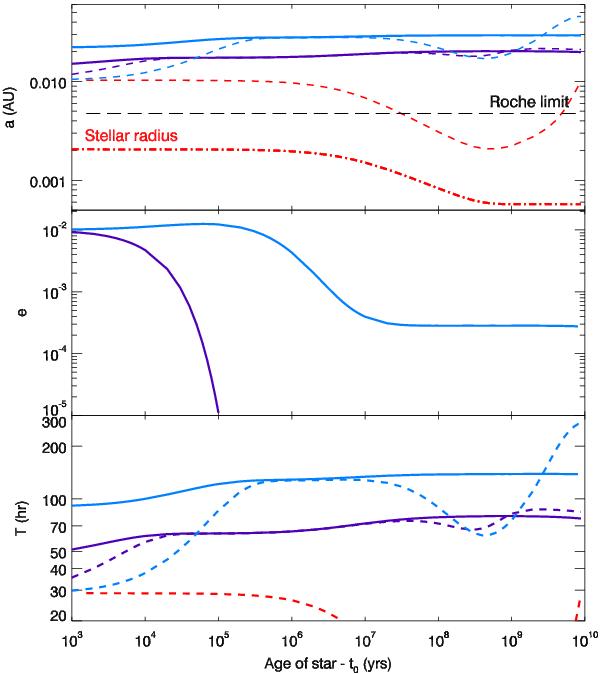Fig. 10

Tidal evolution of a Jupiter-mass planet around a fast-rotating 0.1 M⊙ star with a high dissipation factor. Top panel: evolution of semi-major axis of Jupiter-mass planets (full line) beginning at different initial semi-major axis and of the corresponding corotation distance (dashed line). The red dashed line corresponds to the corotation radius of a star with no planet. Middle panel: evolution of the eccentricity of the planets. Bottom panel: evolution of the rotation period of the planets (full line) and of the corresponding star (dashed line). In both cases, the stellar spin initially increases to reach the spin period of the planet (we consider planets in pseudo-synchronization). Later in the evolution, either the spin-up due to contraction or the spin-down due to stellar wind leads the spin of the star to differentiate from the spin of the planet.
Current usage metrics show cumulative count of Article Views (full-text article views including HTML views, PDF and ePub downloads, according to the available data) and Abstracts Views on Vision4Press platform.
Data correspond to usage on the plateform after 2015. The current usage metrics is available 48-96 hours after online publication and is updated daily on week days.
Initial download of the metrics may take a while.


